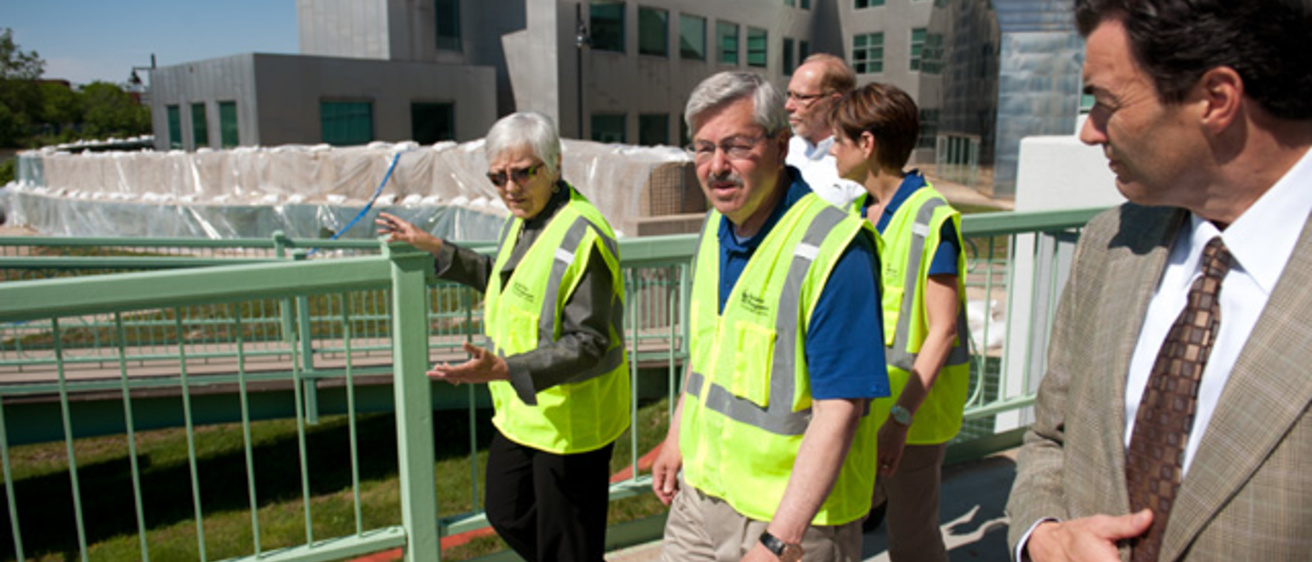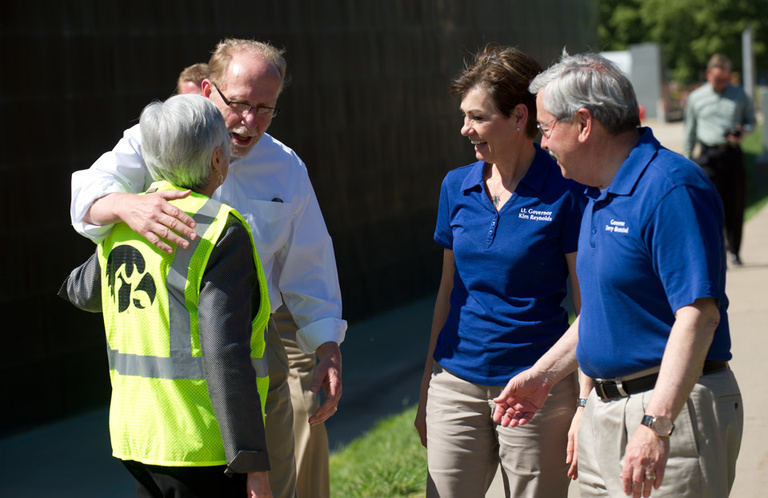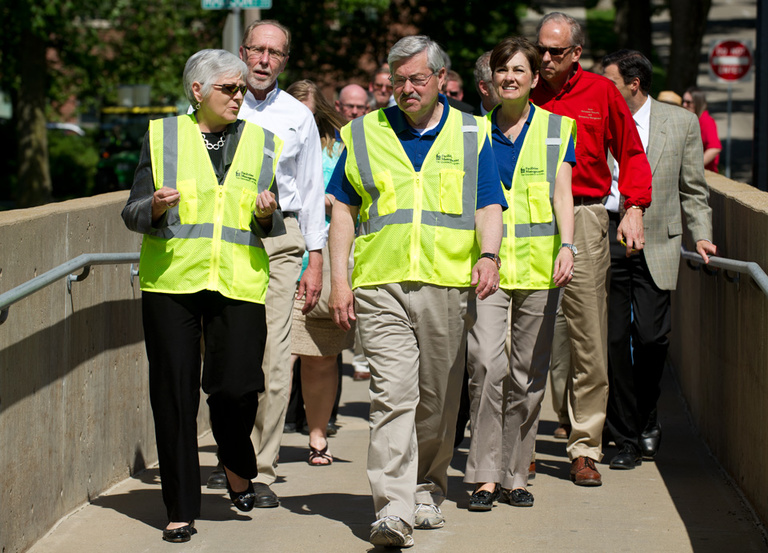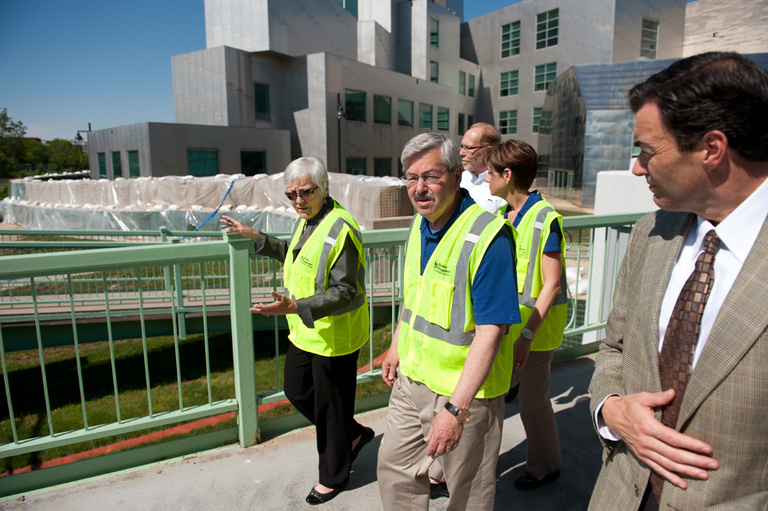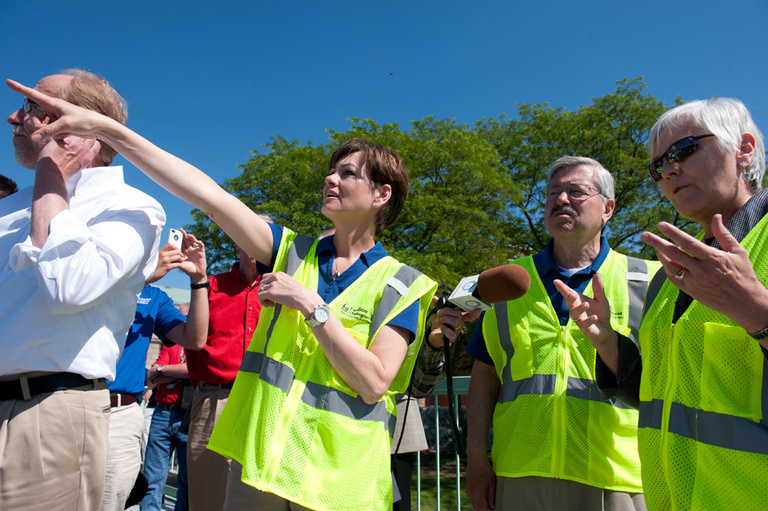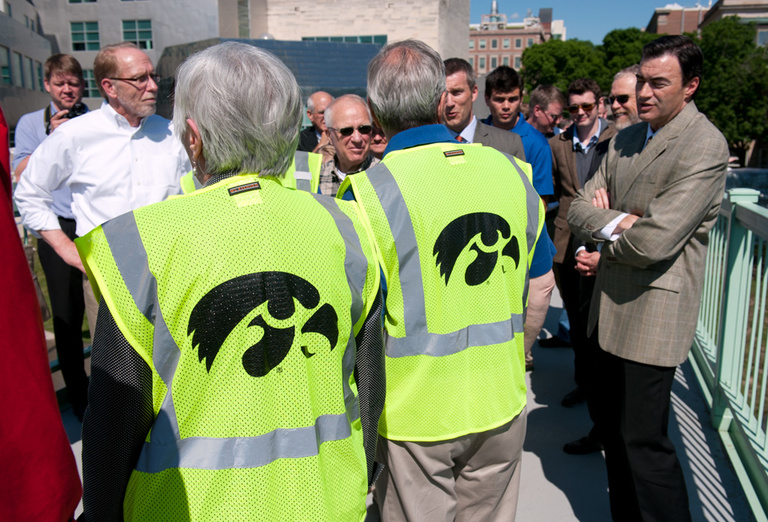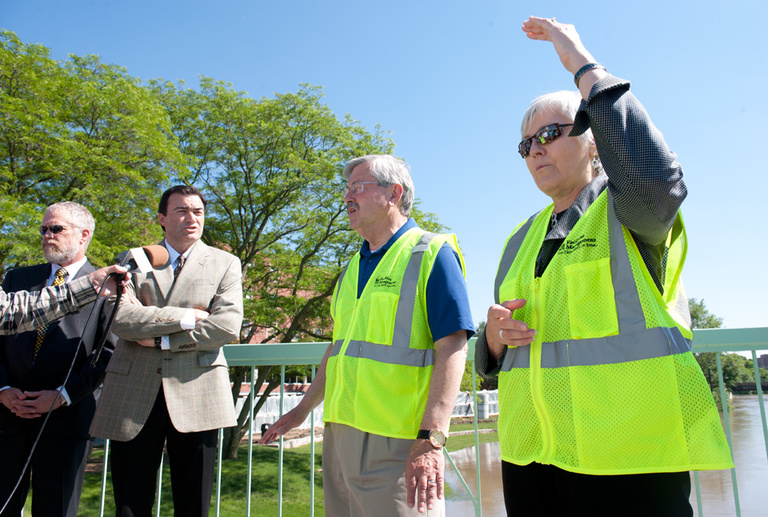Standing on the Iowa Memorial Union footbridge, Iowa Gov. Terry Branstad and Lt. Gov. Kim Reynolds surveyed the University of Iowa’s defenses against a swollen Iowa River, remarking on just how much the state has learned about floods and flood protection over the past five years.
The stop came during a tour of eastern Iowa flooding sites with Iowa Homeland Security and Emergency Management Administrator Mark Schouten. UI President Sally Mason and local, state, and federal leaders joined the governor and lieutenant governor near the IMU and the Iowa Advanced Technology Laboratories.
In a matter of days, University of Iowa crews and contractors have built nearly seven miles of flood walls—rising nearly 12-feet high in places—along the river and around at-risk campus buildings.
“The National Guard taught us how to assemble HESCO barriers,” Mason said, referring the collapsible sand-filled containers that have become a staple of the university’s flood protections. “We’ve been teaching local communities.”
The leaders repeatedly emphasized preparation, communication, and collaboration while praising Iowans’ knack for rallying in the face of threats.
“So many lessons have been learned locally and in other parts of Iowa,” said U.S. Rep. Dave Loebsack. “Iowa has real potential as a model for the rest of the country.”
“What a difference five years makes,” said Iowa City Mayor Matt Hayek. “The collaboration is so much stronger.”
Mason noted that current river-level projections have officials optimistic. Last week, the university was preparing for river flows of more than 24,000 cubic-feet per second (cfs). With little additional rain in the forecast, flows may stay near today’s 19,400 cfs.
Preparations to date reflect the university’s aggressive response to flood threats, staying ahead of projections rather than aiming too short. Given the facilities at stake and the degree of damage suffered in the campus flood of 2008, Mason said the current measures make perfect sense.
Today, the university has a much better sense of what different river levels mean for campus and how to best safeguard low-lying facilities. The Beckwith Boathouse and Mayflower residence hall are the two buildings at most immediate risk, but both are protected and being closely monitored.
As of today, flood waters have not breached any university buildings.
